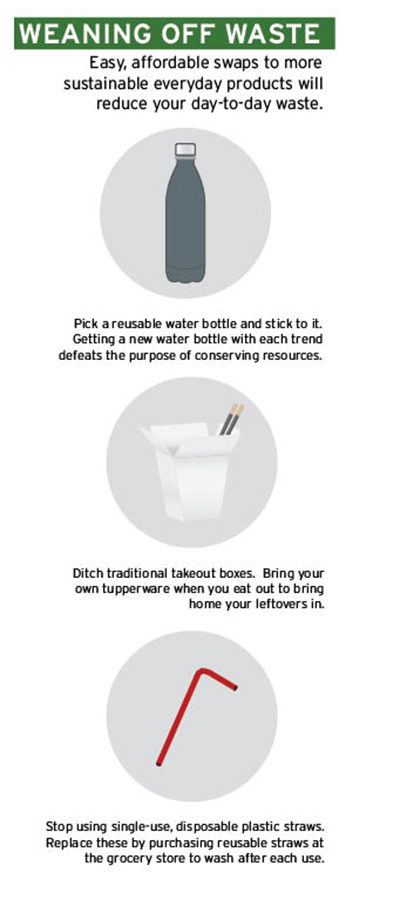Act Now to Save the Planet
Americans must prioritize reducing day-to-day waste in order to sustain the welfare of the planet.
PHOTO | Tribune News Service
The 228-acre Verso paper mill dwarfs the town of Luke on the banks of the Potomac River in Western Maryland, on Nov. 21. The plant generates much of its own power by burning “black liquor,” a sludge byproduct of the paper making process.
After every purchase of a snack or a soda, after every delivery of an online order or every time a previously beloved object loses its value, it is followed by the mindless motions of walking over to the trash can and dropping whatever remnant of an article remains. Wrappers, clothing tags, packaging and even magazines fill up the numerous bins around each household globally. What may seem like small “out of sight, out of mind” acts on the part of the consumer are actually significant contributions to the unsustainable nature of our current living standards as well as to the health of humans and animals alike.
Americans represent 5 percent of the world’s population yet generate 30 percent of the world’s garbage, with the average American contributing 4.40 pounds of waste per day, according to a study by the University of Utah and the Environmental Protection Agency. This heinous collection of unnecessary food waste, plastic containers and grotesque amounts of single-use packaging such as fast food and protein bar wrappers is a physical representation of America’s gluttonous use of resources. The irresponsible entitlement to these resources that America has held for decades is what has expanded the standard of living in terms of convenience of packaging and disposables beyond what the earth is physically able to sustain. For everyone on the planet to live as the average American does, four more earths would be necessary to support their lifestyle, according to the BBC.
Furthermore, the statistics regarding the disposal of waste in America only account for what ends up in landfills. Much of what is thrown away ends up being carried into the streets, the oceans and around the globe by wind, water and human contact. Irresponsible disposal of certain products leads to phenomenons such as “The Great Pacific Garbage Patch” in the Pacific Ocean, an “island” of waste particles and debris heavily comprised of plastic, as every piece of plastic ever produced is still in existence today, according to the EPA.
Not only does garbage look ugly in landfills, oceans and in the streets, it also has an ugly impact on the health of humans and animals. No regulations are placed on production of goods in regards to the long-term, end of usage stage of the good. Due to this lack of regulation, bioaccumulative and toxic contaminants can be released into the ecosystem by mismanaged disposal, according to the EPA. Consequentially, these contaminants are often consumed by animals and often killing them, and are also prone to contaminating seafood.
To a certain extent, trash is an unfortunate and unavoidable result of consumerism. However, as a responsible citizen, every consumer can take small steps towards a more sustainable lifestyle. Simple changes such as bringing a reusable thermos to the coffee shop or making coffee at home, switching from disposable to reusable straws, packing a lunch everyday in glass containers and reusable snack bags and bringing reusable shopping bags to stores are just a few of a multitude of simple ways to reduce one’s negative environmental impact. With responsible consumerism and conscientious usage of resources, Americans can create a more sustainable planet, one reusable straw at a time.




